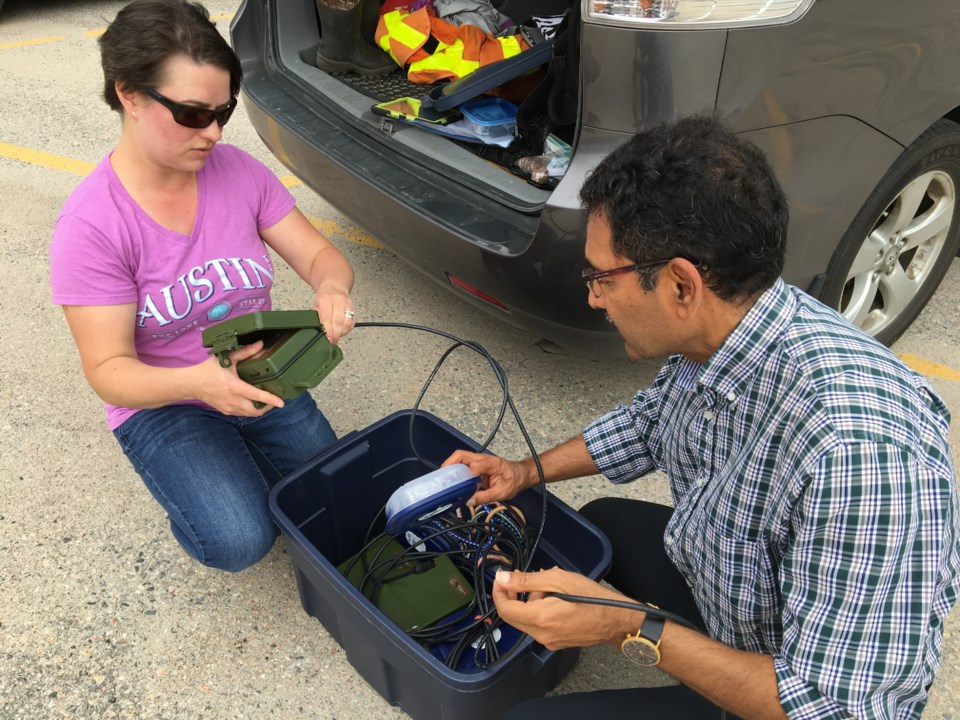A group from the Nipissing Naturalists Club is keeping track of the bat population in the North Bay and Nipissing area.
Last week, members of the club deployed stationary acoustic recorders as part of the North America Bat Monitoring Program.
It is the third summer in a row that the local group has taken part in the project.
All eight species of bats that call Ontario home, also live in the North Bay area. Don’t worry, all the bats in this province do not drink mammal blood.
“All eight bats eat insects exclusively, they are all out at night,” said Rebecca Geauvreau, Species at Risk Biologist, at FRI Ecological Services who works with the Nipissing Naturalists on this project.
“The one interesting thing regarding people who are afraid of bats is I think it is a misunderstanding and there are misconceptions. So bats are mammals just like us, they give birth to live young - one or two every year - they live a long time and they actually play an important role in pest control.”
But over the past three years, officials at the Nipissing Naturalists Club have seen a dip in bat populations which have been directly linked to a disease called White Nose Syndrome.
“We don’t know very much about bats, we take them for granted and then with the spread of White Nose Syndrome, which is a fungal disease,” said Fred Pinto, of the Nipissing Naturalists Club.
“We have seen a large amount of bats die so there is an interest in both Canada and the U.S. to get an idea as to what is happening to the bat populations.
“Any time you see a huge decline of a population, it has an impact on the ecosystem and bats do eat a lot of insects. So as a decline of these small-bodied bats what is going to happen to the insect populations that are now to roam and not get predated on,” Pinto continued.
The local researchers say they are a small part of the bat research that is taking part across the continent. The goal of this research is to find out what his happening to bat populations in the North Bay grid.
“Our goal, we are just a small part of that, for our bat square so we are looking to provide trend through time data on the abundance of the eight species of bats that we have in the North Bay-Nipissing area,” said Geauvreau.



